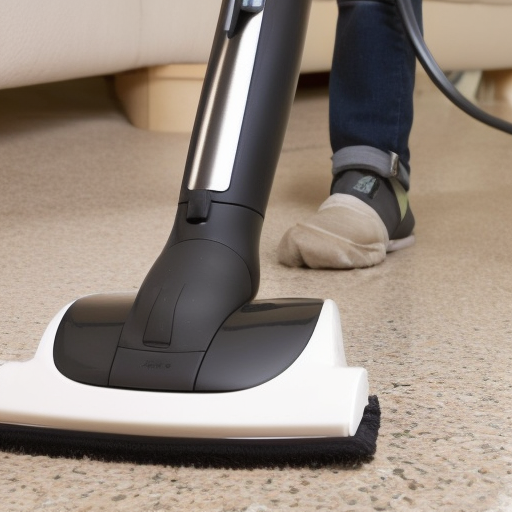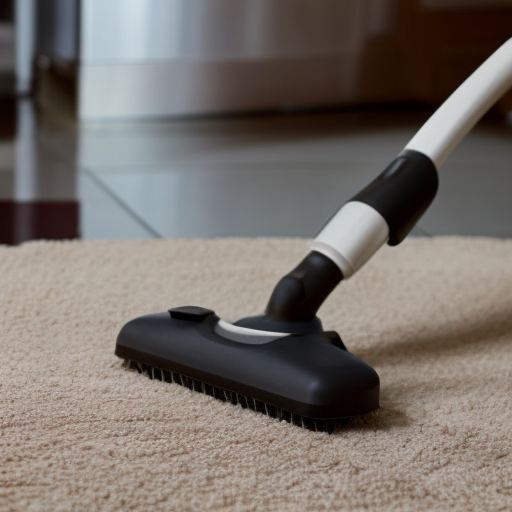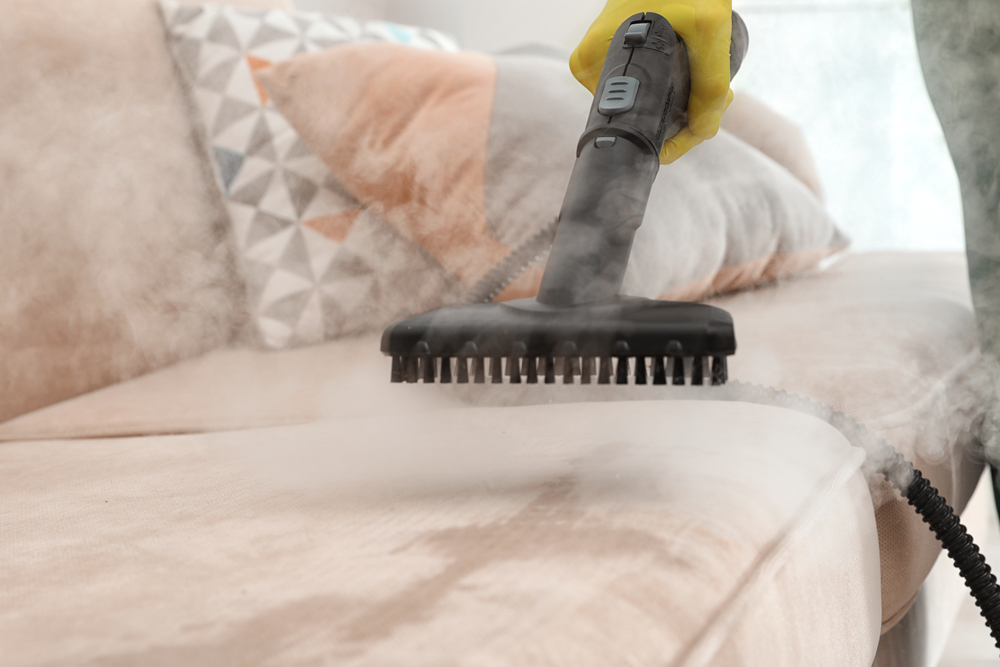Last Updated on February 10, 2023
Are you curious about whether a steam cleaner really works? If so, then look no further. In this blog post, we’ll discuss the basics of steam cleaning and all its components. We will also explore the different types of steam cleaners available to help answer your question: does a steam cleaner work? You may be surprised at what you discover – get ready for an eye-opening experience that could make your household chores much easier.
Table of Contents:
The Basics of Steam Cleaning
Steam cleaning is a powerful and efficient way to clean your home. It works by using pressurized hot steam to break down dirt, grease, grime, and other debris on surfaces. The heat of the steam helps to sanitize surfaces as well as remove tough stains that regular cleaners can’t get rid of. Steam cleaning is also great for killing germs and bacteria without the use of harsh chemicals or detergents.
Steam cleaners come in various shapes and sizes with different features depending on their intended purpose. Most are handheld devices that you fill with water and then plug into an electrical outlet to generate the steam pressure needed for cleaning. Some models have attachments like brushes or squeegees, which allow you to customize your cleaning experience based on what type of surface you’re working with.
There are three main types of steam cleaners: upright, canister, and handheld units. Upright models are larger machines designed for deep-cleaning carpets or large areas such as tile floors or upholstery furniture; they usually feature long hoses, so you don’t need to constantly move them around while in use. Canister models offer more portability than upright versions but still provide plenty of power; these are ideal for spot-cleaning hard-to-reach places like behind radiators or under appliances where a vacuum cleaner won’t fit easily. Handheld units are smaller versions that work best when used on small items such as curtains, drapes, car interiors, mattresses etc., although some do come equipped with attachments allowing them to be used on larger surfaces too, if necessary.
Steam cleaning is an effective way to deep clean and sanitize surfaces, but there are several components that make up a steam cleaner. Let’s take a look at what those components are.
Steam Cleaner Components
Steam cleaners are an essential tool for any home or garden. They provide a powerful and efficient way to clean hard-to-reach areas, as well as surfaces that would otherwise be difficult to clean with traditional methods. Steam cleaners work by heating water until it turns into steam, which is then used to blast away dirt and grime from surfaces. To do this effectively, there are several components of a steam cleaner that need to be understood in order for the device to function properly.
The first component of a steam cleaner is the boiler tank. This is where the water is heated up until it turns into steam. The boiler tank can vary in size depending on the model of your machine; some models have larger tanks than others, allowing them to produce more steam at once. Once the water has been heated up sufficiently, it will pass through a hose and out of the nozzle at high pressure so that it can reach all those hard-to-reach places you want to be cleaned.

The second component of a steam cleaner is its motor or pump system which helps move hot water around inside the machine and create enough pressure for effective cleaning power when released through its nozzle tip onto surfaces needing cleaning attention Depending on your model’s specifications, these motors may range from small electric ones powered by batteries or cords plugged into wall outlets, all the way up to large industrial grade pumps powered by gas engines or electricity sources like generators.
The third component of a steam cleaner is its attachments, which come in various shapes and sizes designed for specific tasks such as scrubbing floors or removing stubborn stains on carpets and furniture fabrics. Some machines also include special tools like brushes tailored to particular materials, like tile grout lines between tiles that require extra care when being cleaned due to their delicate nature. Additionally, some models feature adjustable nozzles allowing users greater control over the heat output during use; this makes them suitable not only for general household cleaning but also for more specialized jobs such as wallpaper removal without damaging underlying walls.
Finally, we have what is known as ‘accessories’. These include things like extension hoses (which allow access to further distances), additional filters (for added protection against dust particles) and even chemical injectors (for adding detergents/disinfectants). All of these components make up modern day steam cleaners, which are capable of tackling tough messes safely and efficiently.
Steam cleaners are made up of a few essential components, including a heating element, water tank and nozzle. Understanding the different parts of your steam cleaner is key to using it effectively – so let’s take a look at the types of steam cleaners available.
Types of Steam Cleaners
Steam cleaning is a great way to deep clean your home and garden. There are several types of steam cleaners available on the market, each with their own advantages and disadvantages.
The most common type of steam cleaner is the handheld unit. These units are lightweight and easy to manoeuvre around tight spaces like corners or furniture legs. They’re also relatively inexpensive compared to other models, making them an attractive option for budget-conscious shoppers. However, they don’t offer as much power as larger models, so they may not be suitable for tougher jobs like removing tough stains from carpets or grout lines in tile floors.

Cylinder steam cleaners are more powerful than handhelds but still relatively compact and portable. They come with attachments that allow you to reach into hard-to-reach areas, such as crevices between tiles or behind radiators where dirt can accumulate over time. The downside is that these machines tend to be more expensive than handhelds, although some models do come with additional features such as adjustable pressure settings which can help make light work of stubborn stains or dirt build up in difficult places around the home or garden.
Mop systems combine both wet mopping and dry vacuuming capabilities in one machine – ideal if you need something that can tackle both tasks quickly without having two separate pieces of equipment taking up space in your cupboard. Mops usually have interchangeable heads, so you can switch between different surfaces easily; however, this versatility comes at a price since mop systems tend to be quite pricey compared to other types of steam cleaners on the market today.
Finally, there are multi-purpose steamers which offer multiple functions, including steaming fabrics (such as curtains), sanitizing surfaces (like countertops), and even killing dust mites within mattresses. While these machines often cost more than traditional steamers due to their added functionality, they are perfect for those who want an all-in-one solution when it comes to keeping their homes clean and hygienic without breaking the bank.
Conclusion
In conclusion, it’s clear that steam cleaners are an effective way to clean and sanitize your home. With the right components and knowledge of how they work, you can make sure that your home is as clean as possible. So the answer to the question “does a steam cleaner work?” is yes – but only if you use it correctly.
Paul is the type of person who never met a problem he couldn’t fix. He can always be found tinkering with something in his house, even if it isn’t broken! His tips and tricks are often shared on our site. He’s the one you call when something breaks because he has been known to improvise fixes for everything from leaky faucets to malfunctioning dryers.

